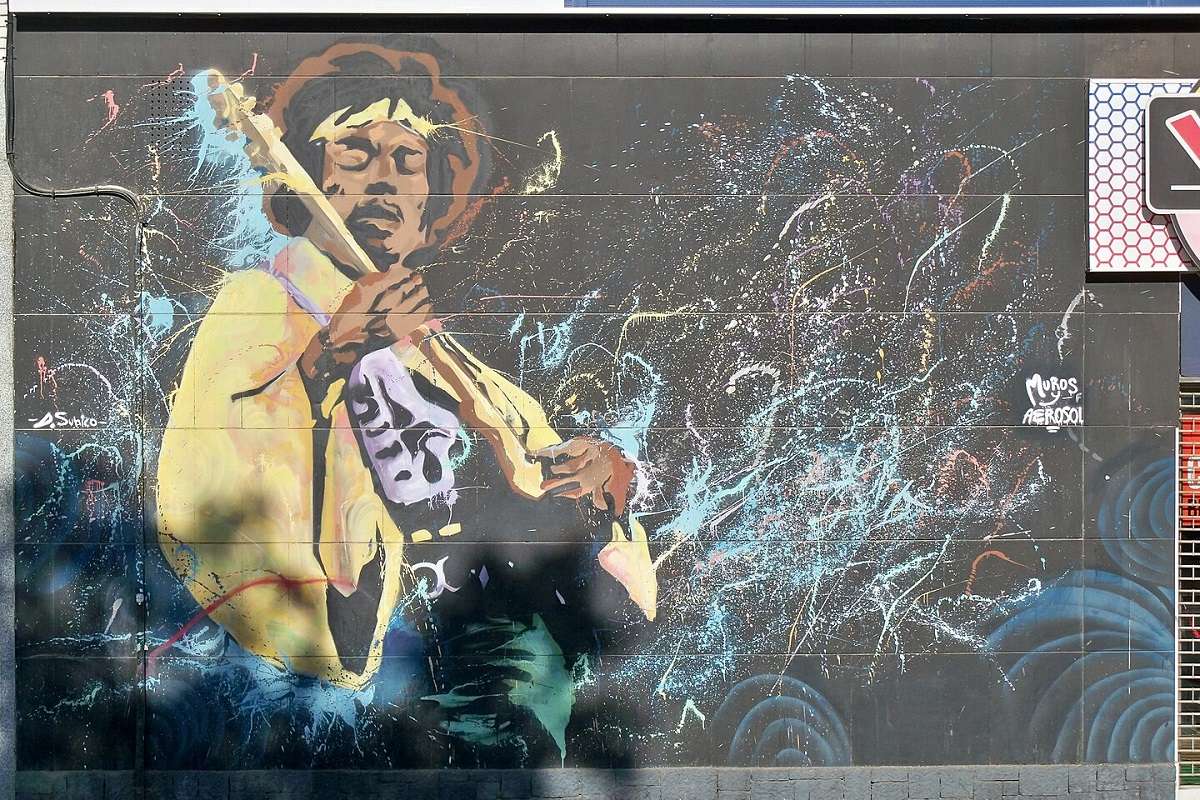On a Sunday morning at Woodstock in 1969, amidst the socio-political turmoil of the United States, Jimi Hendrix took the stage delivering a performance that was more than just musical artistry; it was a profound cultural statement.
With his Fender Stratocaster, Hendrix’s rendition of the “Star-Spangled Banner” transcended mere notes and melodies, morphing into a sonic reflection of the era’s struggles and dreams.
Dissecting Hendrix’s iconic performance
Jimi Hendrix’s performance at the Woodstock Festival is not only one of his most memorable but one that has been etched deeply into the cultural fabric of music and American history.
Known for his electric guitar skills, Hendrix infused the national anthem with distortions, feedback, and sustain that mimicked the chaos and turbulence of America in the 1960s— from the civil rights movements to the protests against the Vietnam War.
While initially undertaken as an unplanned encore to his set, the performance went on to define Hendrix’s musical legacy and still resonates as a symbol of transformative artistic expression.
Implications of the Woodstock performance
The sociopolitical canvas
Hendrix’s rendition came at a time when America was deeply divided. His electric guitar, draped in blues and infused with feedback, mirrored the cries and voices of a generation seeking change.
Unlike traditional interpretations, Hendrix delivered an anthem that reflected the nation’s unrest, thus redefining the very essence of nationalistic displays. It not only questioned the status quo but also underscored the power of music as a form of protest.
Cultural repercussions
Encapsulating the feel of an era, Hendrix’s performance altered the public’s reception of what the national anthem could embody. The musical delivery spoke to many, not just as an anthem, but as an acknowledgment of the need for change and renewal.
His performance remains a pivotal reference point in discussions around the intersections of music, politics, and identity in America.
Behind the scenes and impact
Recorded as one of his most poignant live performances, Hendrix manipulated the timbre and pitch of his guitar to produce sounds that vividly illustrated the violence and upheaval of the period—sounds quite like the rockets and bombs in distant battlefields.
This audacious artistic choice was both critiqued and celebrated, carving him a permanent niche in the annals of musical and cultural history. Interestingly, despite its lasting impact, Hendrix himself described the performance simply as “beautiful.”
This performance not only solidified Hendrix’s reputation as a trailblazer but also highlighted his unique ability to convey complex messages through his music. His interpretation has been widely discussed in academic circles and is often taught in music and history classes across the United States as a critical analysis of 1960s culture.
The enduring legacy of Jimi Hendrix’s rendering
Even decades later, Hendrix’s interpretation of the “Star-Spangled Banner” remains a powerful symbol of the era’s cultural shifts and the enduring capacity of music to echo public sentiment and inspire change.
Beyond a mere musical performance, it stands as an important historical artifact, inviting listeners to reflect on their national identity and the transformative power of artistic expression.
Whether viewed as controversial or revolutionary, Hendrix’s Woodstock performance encapsulates the climax of a cultural revolution, the reverberations of which continue to influence artists and audiences alike.
His electric guitar not only changed the soundscapes of the future but also redefined what it means to be patriotic in a modern world.
In concluding, Jimi Hendrix’s electrifying rendition of the Star-Spangled Banner at Woodstock in 1969 did not just redefine the way a nation heard its anthem; it challenged and reshaped how a nation perceives itself during times of profound change.
The echoes of his guitar continue to resonate, reminding us of music’s undeniable role as both a mirror and molder of societal values and struggles.






